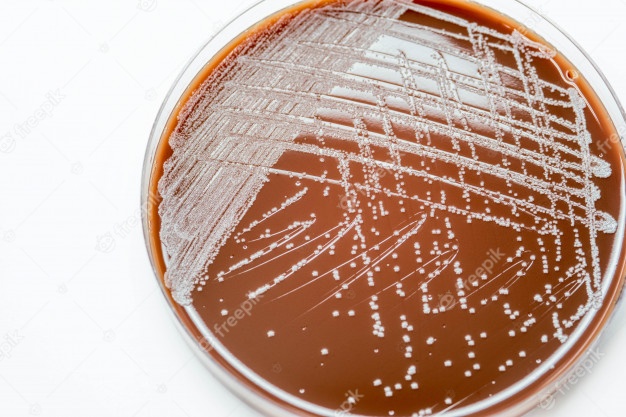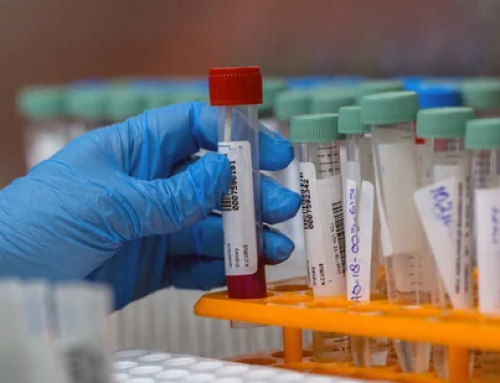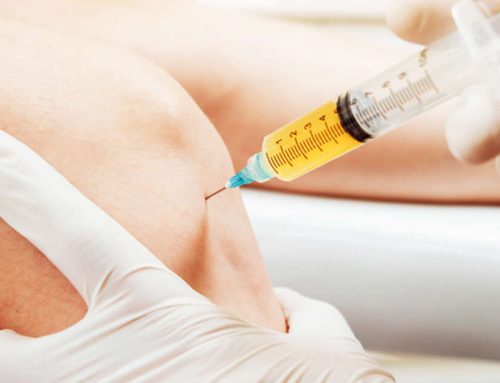Chocolate Agar (CAP or CHOC) is a non-selective, enrichment medium that has applications in the isolation and identification of fastidious pathogens. It is prepared by heating blood agar, which leads to the rupture of red blood cells in the medium and releases nutrients that aid in the development of fastidious bacteria, most significantly Haemophilus and Neisseria species. This agar medium gets its name from the fact that the lysis of RBC offers the medium a chocolate-brown colour.
Composition of Chocolate Agar
| Ingredients | Grams /Litre |
| Casein/Animal Tissue Digest | 15.0g |
| Cornstarch | 1.0g |
| Sodium chloride | 5.0g |
| Dipotassium Phosphate | 4.0g |
| Monopotassium Phosphate | 1.0g |
| Hemoglobin solution | 2% |
| Koenzyme enrichment | 10.0ml |
| Agar | 10.0g |
Principle
Chocolate Agar Base, with the addition of supplements, offers extraordinary growth of the fastidious organisms without overgrowth of contaminating organisms. Casein and animal tissue digest provide the organism with nitrogenous nutrients, amino acids, and different constituents crucial for the growth of the organisms. As Neisseria species are particularly sensitive to poisonous substances including fatty acids, therefore the addition of cornstarch enables neutralize possible toxic metabolites, whilst potassium phosphate enables the maintenance of a uniform pH throughout the increase. Sodium chloride maintains osmotic equilibrium thereby preserving the integrity of cells. It is also considered a version of the blood agar plate, containing red blood cells which have been lysed via slowly heating the medium to 80°C. The heat inactivates enzymes that may otherwise degrade NAD. The introduced supplements offer the essential X factor (from Haemoglobin) and V factor (from Growth Supplement) required by the fastidious organisms.
Some modifications can also be made for the growth of the specific organism such as:
- Thayer-Martin Media: Thayer martin medium is a modification of chocolate agar that involves the addition of vancomycin, nystatin, and colistin to prevent the normal flora, which includes nonpathogenic Neisseria for the selective isolation of N. gonorrhoeae and N. meningitidis.
- Chocolate Agar with bacitracin: This modification is used as a selective medium to enhance the primary isolation of H. influenzae from samples consisting of sputum that consists of a mixed flora of bacteria and/or fungi.
- Chocolate agar supplemented with GC base and growth supplement: This version of chocolate agar is used to assist the unique growth requirements (hemin and NAD) required for the isolation of Haemophilus spp. when incubated at 35-37°C in a 5% CO2 atmosphere.
- Chocolate agar with TSA and growth supplements: It is a modification that helps in the unique growth requirements (hemin and NAD) needed for the isolation of fastidious organisms consisting of H. influenzae when incubated at 35-37°C in a 5% CO2 atmosphere.
Uses of chocolate agar
- To isolate fastidious organisms including H. influenzae, N. gonorrhoeae, N.menigitidis from numerous scientific samples, that aid in the analysis of disease.
- Chocolate agar with bacitracin acts as a selective medium for screening H. influenzae from samples e.g. sputum containing mixed flora of microorganisms
Chocolate agar Limitations
- It is usually recommended that additional biochemical and/or serological assessments ought to be executed on isolated colonies from the pure culture to complete identification.
- It is an enriched medium, therefore non-pathogenic organisms may also overgrow pathogenic bacteria. If isolation of N. gonorrhoeae is desired, a selective medium including Thayer Martin Agar, modified should be utilized in parallel with this non-selective formula.
- Precipitated hemoglobin may also appear as darkish spots on or in the media and does not affect the overall performance of the media.
- The presence or absence of N. gonorrhoeae in a sample does not rule out the feasible presence of different pathogenic organisms.
If your lab is looking for ready-made Chocolate Agar Plates, connect with ADVANCELLS at [email protected] to get more info on our range of microbial culture products.






Leave A Comment